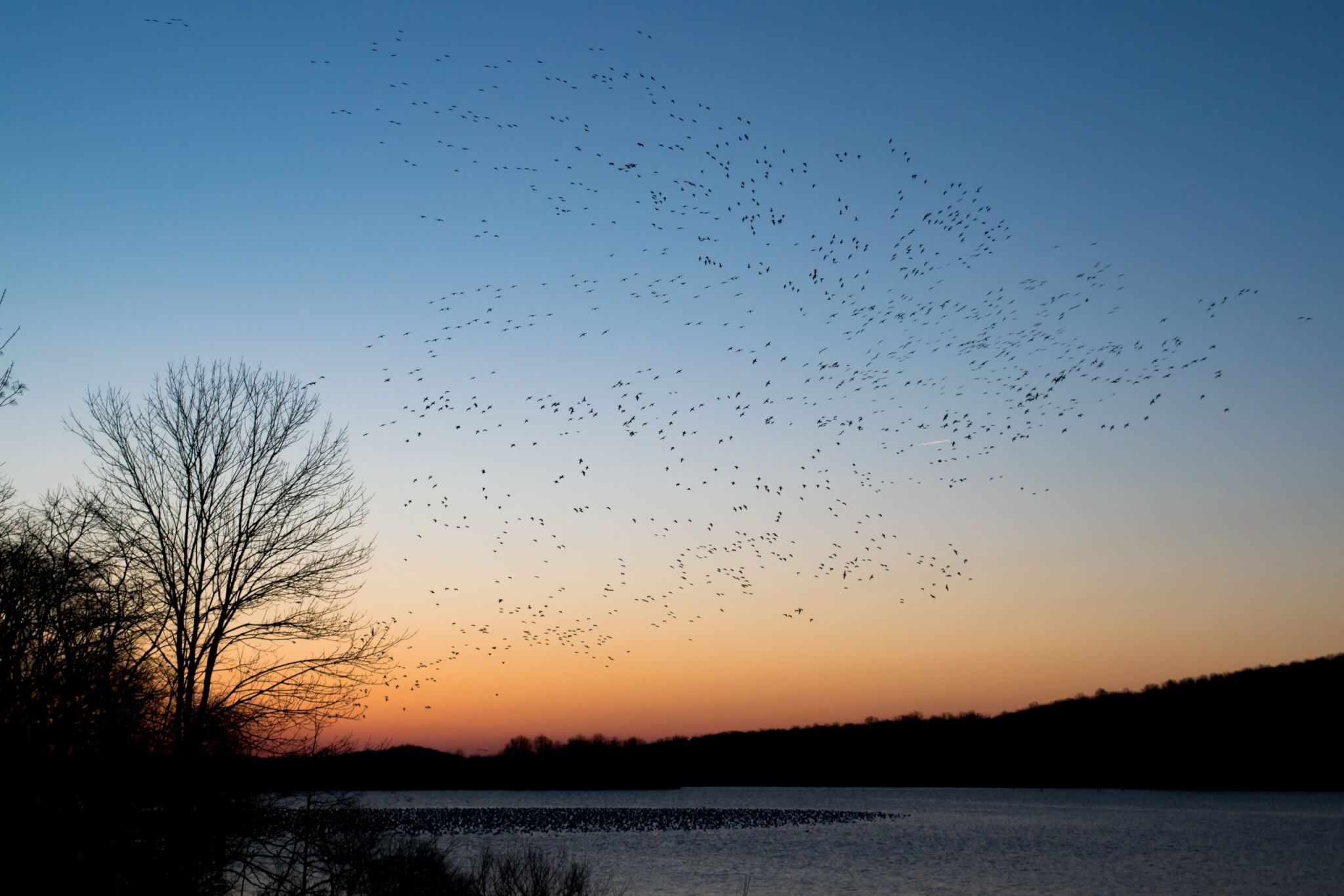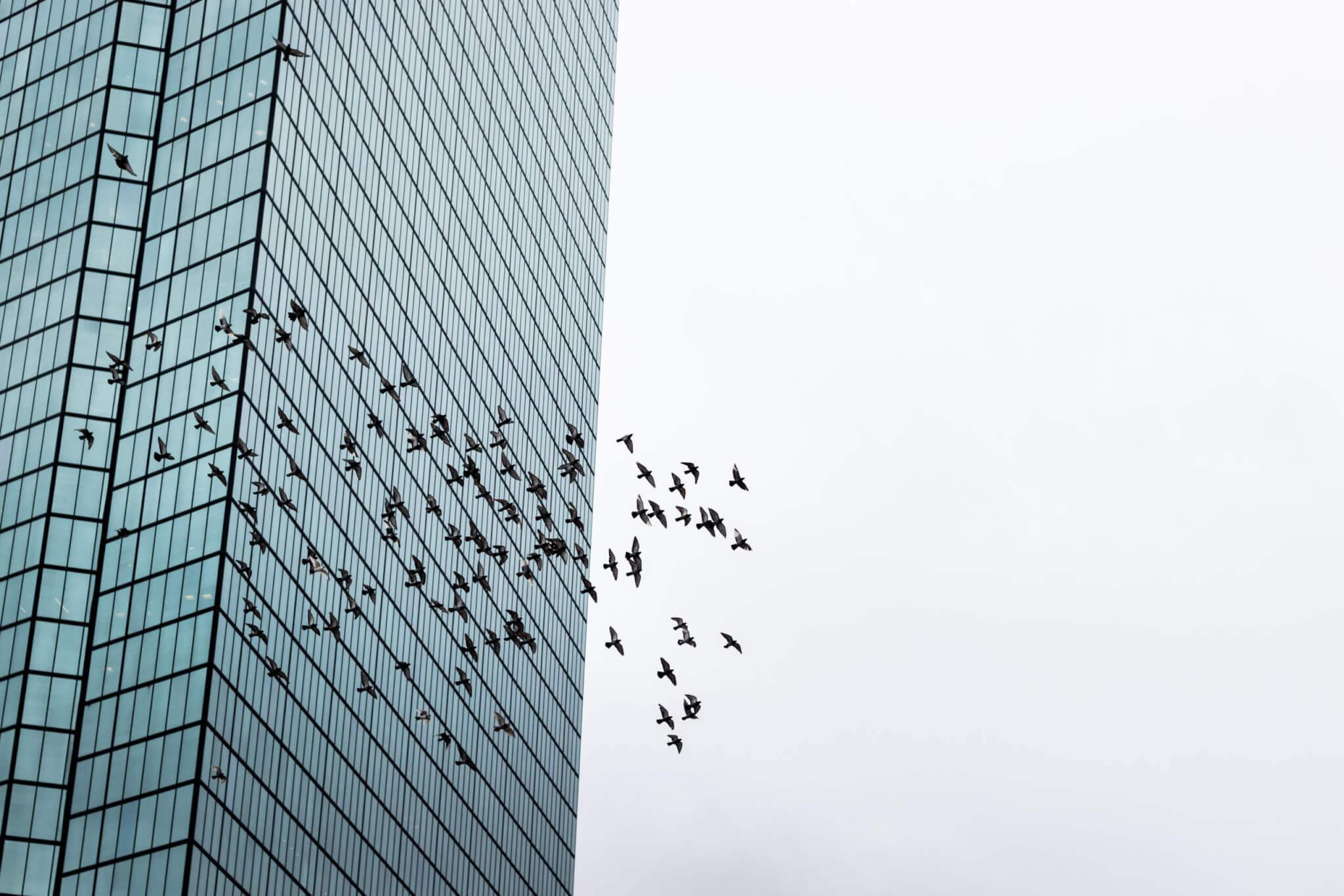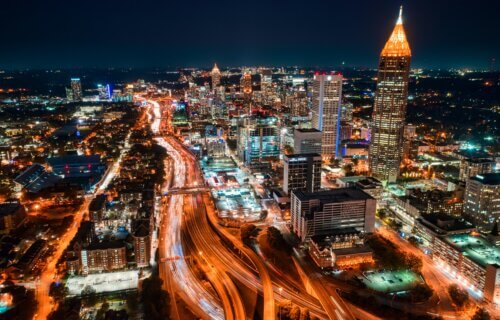FORT COLLINS, Colo. — Artificial light significantly influences where migrating birds choose to land, posing a critical threat to their survival, new alarming research shows. This revelation follows a tragic incident in early October, when nearly a thousand birds met their untimely demise in a single night after colliding with an illuminated building in Chicago. The catastrophic event underscores a burgeoning environmental crisis: the impact of light pollution on migrating birds.
Migration mitigation
Migration is an instinctive, yet tiresome journey for birds. With flights spanning thousands of miles, finding safe resting places is crucial for their survival. The study published in Nature Communications takes a deep dive into this difficult dilemma. While cities offer respite for exhausted birds, they also pose significant risks and becomes what lead author Kyle Horton describes as an “ecological trap.”
Skyscrapers can lead to deadly collisions, and urban sprawls reduce available habitats and food sources. Urban parks, though beneficial, force birds to compete for limited resources.
Utilizing extensive weather radar data, Horton, an assistant professor in Colorado State University’s Department of Fish, Wildlife and Conservation Biology, created the first continent-wide maps showing migration stopover hotspots for birds in the United States. As Horton puts it, “These stopover locations are the fueling stations. If they don’t have a good spot to rebuild energy supplies, migration can’t happen.”

The research is a monumental effort, pairing over 10 million radar observations with landscape data. Surprisingly, light pollution emerged as the second most significant predictor of bird stopover density, trumped only by elevation. Geoff Henebry, co-author and professor at Michigan State University, emphasizes the study’s novelty in combining extensive data from weather radars and spaceborne sensors.
“Cities pose multiple risks to migrating birds,” says Henebry. “They also offer resources for the tired birds to rest and refuel. Our study is notable in that it combines big data – and a lot of processing – from the weather surveillance radar network with big data from multiple spaceborne sensors to address key questions regarding the influence of urban areas on bird migration.”
The attraction of birds to urban areas creates a significant conservation challenge. Horton and his team grapple with whether to promote urban centers as key stopover locations or to advocate for reducing urban lighting. The issue is complex, involving multiple stakeholders with differing views on urban lighting.
Light pollution: More than just a bird issue
Light pollution isn’t just a bird problem; it’s a human problem too. It disrupts human circadian rhythms, potentially leading to serious health issues. “We don’t often think about light as a pollutant, but it checks all the boxes of what pollution is,” Horton emphasizes.
BirdCast, a collaborative project involving CSU, the Cornell Lab of Ornithology, and the University of Massachusetts, offers hope. It provides migration forecasts and real-time maps to help reduce light pollution on critical nights. Simple solutions like retrofitting windows with decals and using warmer light hues can also make a significant difference.

A notable success story is the shift in 2016 by the Federal Aviation Administration, which began requiring communication towers to use flashing lights instead of continuous ones, significantly reducing bird collisions.
We can help migrating birds
The mass fatalities at Chicago’s McCormick Place Convention Center, involving 33 species of songbirds, are a stark reminder of the urgency of this issue. It’s estimated that nearly one billion birds collide with buildings annually in the U.S. Public awareness and simple measures, like turning off unnecessary lights, could have immediate positive impacts on bird conservation.
The solution, though complex in its implementation, is conceptually simple: reducing light pollution can have an immediate and positive impact on bird populations. “Most people might not realize that birds migrate at night,” Horton says. “If we turned off all lights tonight, there would be no birds colliding because of lights tonight.”
Prior research has established a clear link between artificial light at night and its adverse effects on migrating birds. A study published in “Ecology Letters” in 2018 demonstrated that bright light sources attract airborne migrants, leading to increased collisions with structures and influencing their selection of migratory stopover habitats. This research indicated that while birds are broadly attracted to artificial light at a regional scale, they tend to avoid areas in close proximity to brightly-lit sources, which can impede their selection of extensive forest habitat, crucial for successful migration.
In light of these new findings, it’s clear that our brightly lit cities not only shape the skyline but also inadvertently dictate the survival of countless migrating birds. The challenge ahead is balancing urban life with the needs of these winged travelers, whose journeys are vital to our ecological system.
South West News Service writer Imogen Howse contributed to this report.
